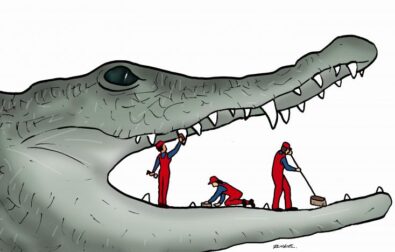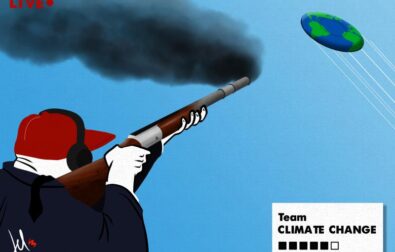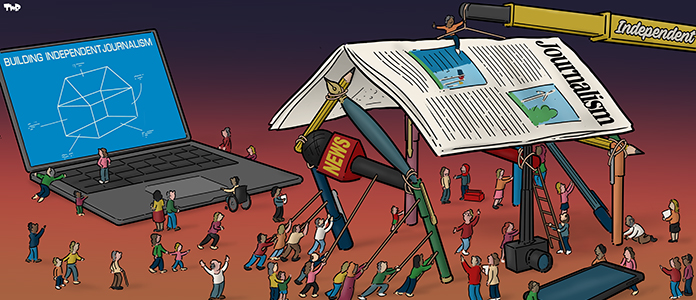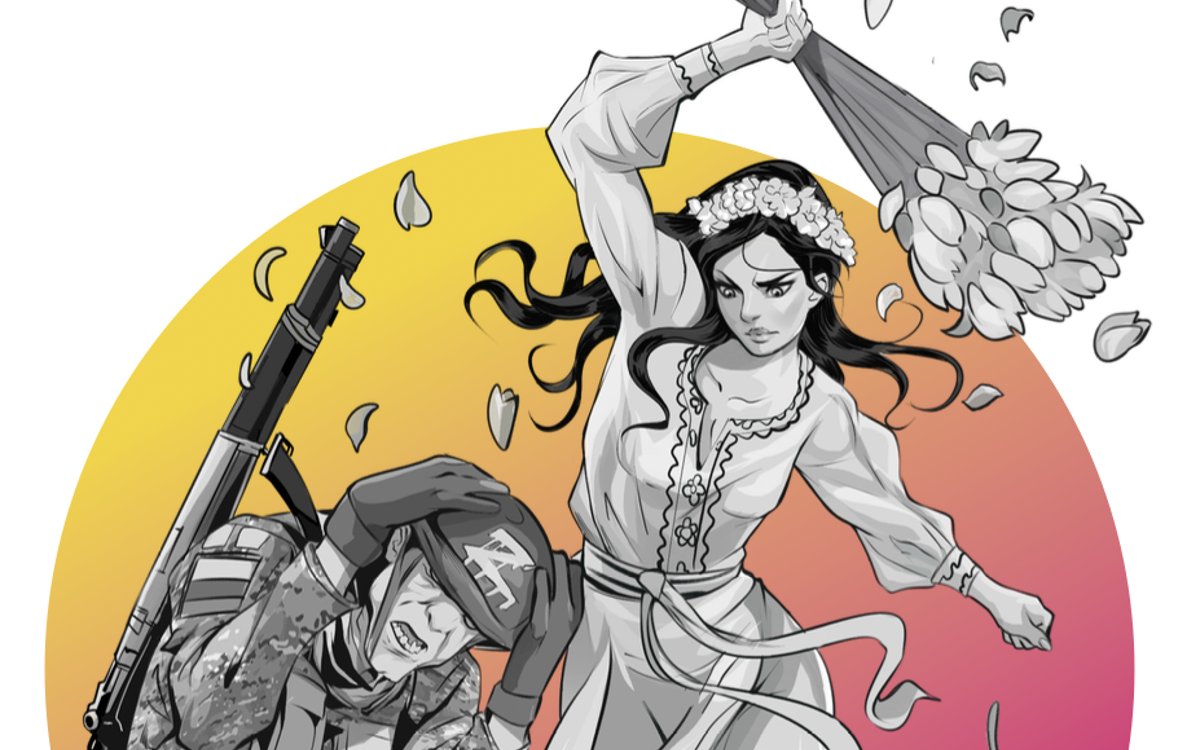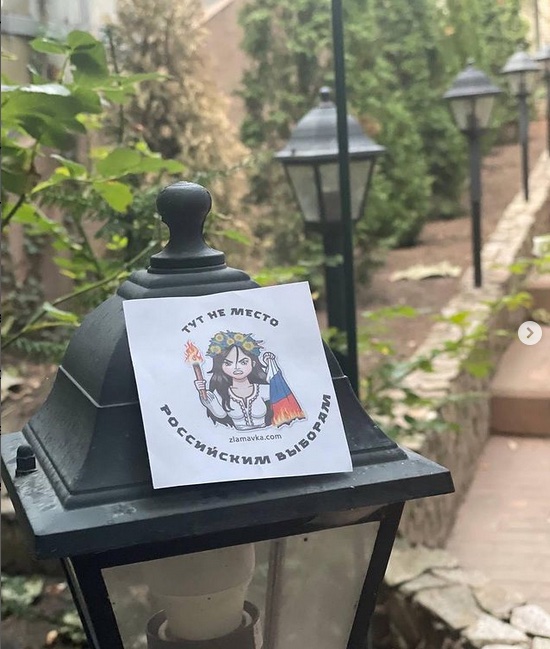In the Ukrainian city of Melitopol, protests against the occupation in the spring of 2022 were particularly well-attended. Three women there self-organised to make it clear to the Russian soldiers that they were not welcome in the city, even after a year. In response to a propaganda initiative of the occupying army, which was distributing flowers to local pensioners, on 8 March one of these three founders of “Zlaja Mavka” or "ZlaMavka" (“Angry Mavka”), who is a painter by profession, drew a poster that went viral in the city. On it, a woman dressed in traditional Ukrainian clothes hits a Russian soldier with a bouquet of flowers. "I don't want your flowers, I want my Ukraine", says the inscription.
Since then, according to an anonymous interview given by one of the three women to the German broadcaster DW, hundreds of women have identified with the Mavka movement in their daily acts of dissent. Like other Ukrainian partisan groups, Mavka began operating on social networks and the messaging platform Telegram. The artist's posters can be downloaded in PDF format, which allows them to be easily reused.
Mavka, a figure from Ukrainian literature and language
In Ukraine the mavka is a folkloric figure, a local variation of the Rusalka figure in Slavic mythology: a female similar to an amazon, who is associated with natural watercourses. In one popular narrative of Ukrainian peasants, mavkas were women who died by drowning; in another version, they were those who were never baptised. They are first mentioned in the Eneida, a parody of Virgil's work published in the late 18th century by Ivan Kotliarevsky, one of the fathers of modern Ukrainian literature.
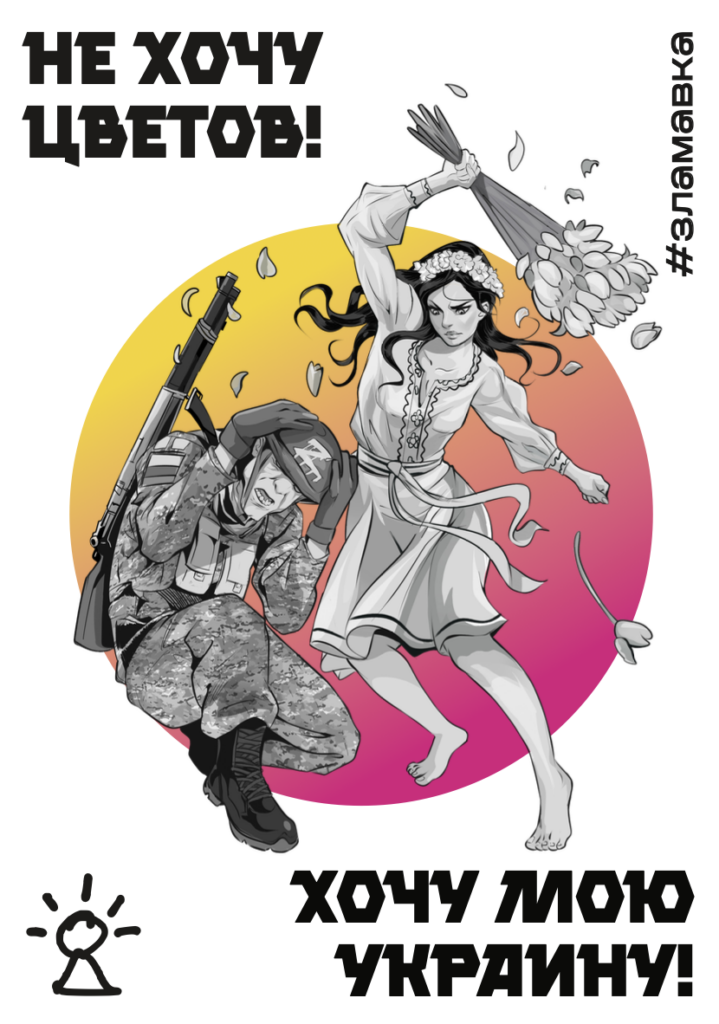
In it, the Virgilian sirens become Carpathian mavkas. The linguistic variation adopted by Kotliarevsky in the poem, based on the Ukrainian dialect spoken in the Poltava area, helped fix some of the grammatical rules of the Ukrainian language.
Interesting article?
It was made possible by Voxeurop’s community. High-quality reporting and translation comes at a cost. To continue producing independent journalism, we need your support.
The particular significance of the mavka in Ukrainian literature is due to the writer and poet Lesja Ukraїnka, one of the most daring supporters of Ukrainian independence during the period of the "Tsarist peoples' prison". Of feminist and progressive convictions, Lesja Ukraїnka participated in the foundation of Ukraine’s social-democratic party. A few months before her death in 1911, she dedicated a dramatic poem in three acts to these mythological green-haired figures.
In spring 2023, a Ukrainian animated film was released, a transposition of Lesja Ukraїnka's work. The protagonist of "Mavka and the Enchanted Forest" is a girl with green hair, as mavkas were generally described in Ukrainian literature and peasant legend. Curiously, her image became known to Western film buffs just as three women in Melitopol began to use her as a symbol against the Russian occupation.
Life under occupation and the risks of anti-Russian resistance
In southern Ukraine, the Russian army and its administrative machinery are trying to legitimise their presence, or at least to push the local population into passive acceptance. The illusion of the first days of the invasion, that Ukrainians would welcome Putin's army with flowers and tears of joy, has long since vanished.
Only a minority of residents have chosen, willingly or unwillingly, to stay. Small towns such as Vuhledar sometimes now number less than one-thirtieth of their population in 2021. The remainers are an enigma for Western journalists and sometimes even for Ukrainian ones. It is no easy task to understand their opinions and lifestyle while steering clear of the Kremlin's (pervasive but not all-pervasive) propaganda. not least because any journalist not accredited with the Russian authorities is denied access.
Many of the survivors in the regions occupied by Moscow after 24 February 2022 are elderly people. They are unable to take refuge elsewhere or else do not want to leave their homes, even if these were damaged in the fighting. These residents’ uncompromising attitude is disarmingly human but it has not prevented the Russians from trying to convert their exhaustion and apathy into loyalty.
None of this has prevented a clandestine resistance movement emerging among the younger, more motivated population that has decided to stay in Berdyansk, Mariupol, Melitopol and Volnovakha.
As the Italian-Ukrainian activist Marianna Soronevych recounts, for example, many residents of Melitopol have not turned down a double pension (the Ukrainian one keeps arriving) or humanitarian aid from Moscow, usually of basic foodstuffs. At least as long as such subsidies are sustainable for Russia, this is enough to placate a part of the population that aspires to little more than survival. Such circumstances partly explain why a mass rebellion has never taken place in the parts of Ukraine illegally occupied by Russia.
Even in Crimea, from which most of the anti-Moscow Ukrainians and Tatars were forced to flee back in 2014, a group of around seven thousand Tatar, Ukrainian and ethnic Russian partisans is active. Known as Atesh, for the past year it has also operated in other occupied areas and even on Russian territory. At the beginning of May, Atesh claimed responsibility for an assassination attempt on the National Bolshevik writer Zachar Prilepin.
This acolyte of the late Eduard Limonov has become increasingly Ukrainophobic since 2014 and has been attacking Russian artists, including Oleg Kulik, who are opposed to the Ukraine invasion.
Other resistance movements are linked via an extensive network, mainly via Telegram groups. The most important of them is probably Yellow Ribbon, which originated in Kherson during the March 2022 occupation and has gradually become more active in other regions, including Crimea and the Donbas.
Moscow is confident that it can contain the worst discontent with its usual methods: fear and repression. In a context in which even minors (Tigran Ohannisyan and Mykyta Khanhanova in Berdyansk) have been killed after sabotage attempts, and where in Russia one may get seven years in prison for a Facebook post, every gesture, however small – such as those of the Mavka movement – takes on an extraordinary significance.
One supporter of the Mavkas is Oleksandra Matviichuk, founder of the Centre for Civil Liberties, the Ukrainian NGO that won the 2022 Nobel Peace Prize together with Belarusian activist Ales Bjaljacki and the Russian foundation Memorial.
"Ukrainian women are in the frontline of the fight against the occupier and are making a huge contribution, at the front, in the occupied territories and in the rear. Don't make Ukrainian women angry! Courage has no gender", Matviichuk wrote in her appeal.
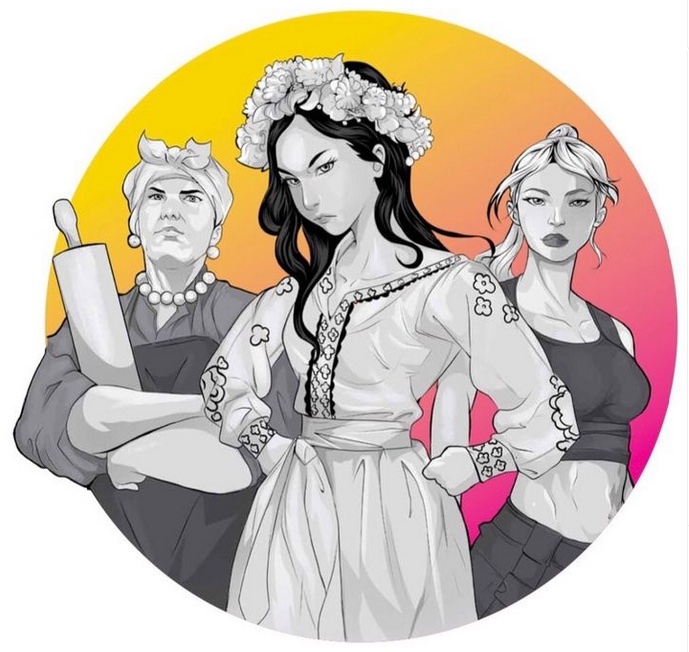
From the outside, gestures such as refusing to take a Russian passport or pension, painting a wall with yellow and blue spray cans, daubing a Ukrainian trident on a fence, or just withholding cooperation from the occupiers, all seem like minor acts of protest compared to the extreme violence that we see elsewhere in this war – indeed, compared to some partisan actions in Melitopol itself: during the weeks when the Mavka movement was emerging, unknown assassins blew up the occupying mayor in his car.
Yet one must never forget the risks involved in expressing any public gesture of opposition to the Russian occupation regime, nor the importance of carrying out coordinated, sensible and non-dispersive actions.
As was pointed out by the founder of Yellow Ribbon in an interview, many citizens in the occupied areas are initially wary of even symbolic forms of protest. There is a fear that the secret services or the Russian police are lurking behind them, hunting for "politically dangerous" Ukrainians.
The risks are even more tangible for women, especially those living alone or in isolated places in the occupied cities. In the pro-Russian channels in Melitopol, a veritable "woman hunt" is under way, with the Mavkas identified as saboteurs.
The brutality of Russian soldiers is well known. Towards women this takes the form of sexual violence in the occupied areas. Numerous incidents are now emerging in the zones recaptured by the Ukrainians, following investigations and testimonies.
In such a climate, any form of resistance has value. Some Ukrainians in the occupied areas have adopted a strategy of passive survival. But movements such as the Mavkas testify to another attitude: one of no surrender, even in the knowledge that the next act of dissent could, tragically, be the last.



